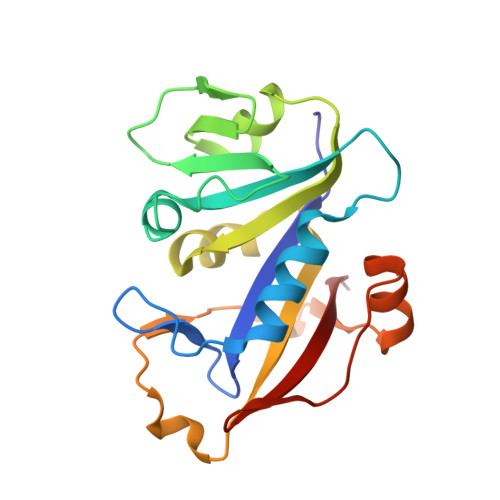Propargyl-Linked Antifolates are Dual Inhibitors of Candida albicans and Candida glabrata.
G-Dayanandan, N., Paulsen, J.L., Viswanathan, K., Keshipeddy, S., Lombardo, M.N., Zhou, W., Lamb, K.M., Sochia, A.E., Alverson, J.B., Priestley, N.D., Wright, D.L., Anderson, A.C.(2014) J Med Chem 57: 2643-2656
- PubMed: 24568657
- DOI: https://doi.org/10.1021/jm401916j
- Primary Citation of Related Structures:
4HOE, 4HOF, 4HOG - PubMed Abstract:
Species of Candida, primarily C. albicans and with increasing prevalence, C. glabrata, are responsible for the majority of fungal bloodstream infections that cause morbidity, especially among immune compromised patients. While the development of new antifungal agents that target the essential enzyme, dihydrofolate reductase (DHFR), in both Candida species would be ideal, previous attempts have resulted in antifolates that exhibit inconsistencies between enzyme inhibition and antifungal properties. In this article, we describe the evaluation of pairs of propargyl-linked antifolates that possess similar physicochemical properties but different shapes. All of these compounds are effective at inhibiting the fungal enzymes and the growth of C. glabrata; however, the inhibition of the growth of C. albicans is shape-dependent with extended para-linked compounds proving more effective than compact, meta-linked compounds. Using crystal structures of DHFR from C. albicans and C. glabrata bound to lead compounds, 13 new para-linked compounds designed to inhibit both species were synthesized. Eight of these compounds potently inhibit the growth of both fungal species with three compounds displaying dual MIC values less than 1 μg/mL. Analysis of the active compounds shows that shape and distribution of polar functionality is critical in achieving dual antifungal activity.
- Department of Pharmaceutical Sciences, University of Connecticut , 69 N. Eagleville Road, Storrs, Connecticut 06269, United States.
Organizational Affiliation:




















